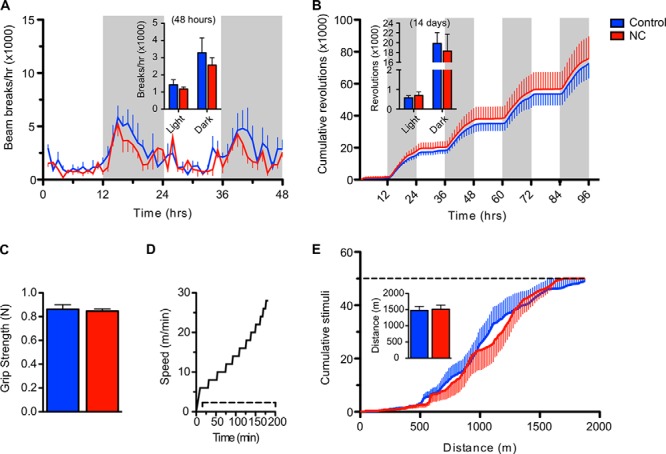FIGURE 3.

Overexpression of NAMPT in muscle does not change voluntary movement or endurance. A, voluntary ambulatory activity assessed by counting infrared beam breaks. The time course represents the 48-h period following habituation. Shaded panels indicate periods of darkness. Inset, average activity during light and dark hours of the time course (n = 5 mice per group). B, voluntary wheel running activity. The time course represents the first 96-h period following habituation. Inset, average wheel revolutions during light and dark hours over the entire 14-day period (n = 8 per group). C, maximum forelimb grip strength (n = 9–12 per group). N, newtons. D, treadmill protocol for exercise tolerance test at 0° incline. The dashed line indicates the presence of electrical stimuli. E, exercise-induced fatigability. The dashed line indicates the exhaustion threshold. Inset, average total distance run at exhaustion (n = 10–11 per group). Blue and red bars represent control and NC groups, respectively. Error bars represent S.E. No significant differences were observed at any time point by Student's t test. Mice were aged 9 (A) or 4–5 months (B–E).
